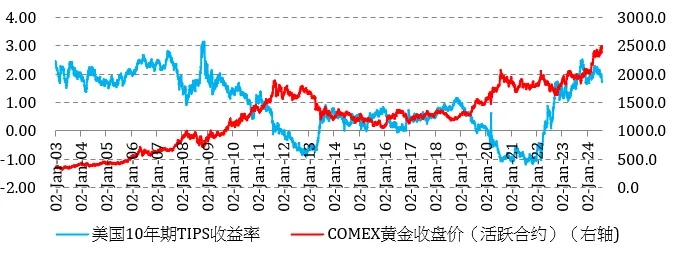At the beginning of August, there was a violent turmoil in the global financial market. European and American stock markets fell sharply, and Japanese and Korean stock markets triggered a rare fuse mechanism. At a time when global stock markets plummeted, no class of assets seemed to be spared, and gold, known as a safe asset, once suffered a sell-off.
Deleveraging triggers investors to temporarily sell gold for cash
First, U.S. stocks fell sharply, and crowded trading in technology stocks triggered a panic flight in the market. In order to adjust some leveraged trading positions in U.S. stocks, some investors had to sell gold in exchange for liquidity to prevent liquidity risks after unleveraged trading.
Second, the Bank of Japan's rate hike led to the reversal of yen carry trade. The rise of yen exchange rate and interest rate led to large-scale losses on the asset side of investors in carry trade, forced to adjust their positions, and at the same time sold gold in exchange for liquidity to supplement the margin of leveraged trade.
Judging from historical experience, when the market experiences violent turmoil, extreme panic or even a financial crisis, the safe-haven attribute of gold is often not brought into play at the beginning, but it has to go through a period of selling in exchange for liquidity. As far as the investment portfolio is concerned, holding gold is conducive to reducing the beta risk of the investment portfolio, but once the overall investment portfolio suffers a loss, investors often sell gold together.
A large-scale dollar liquidity crisis has not yet broken out
Looking back at the past, every round of economic crisis or financial crisis triggered by the United States will be accompanied by a US dollar liquidity crisis. In the case of a US dollar liquidity crisis, all kinds of assets will be sold off indiscriminately. However, this round of market crash did not trigger the liquidity crisis of the US dollar, so gold will continue to be favored by investors after the market panic.
The outlook for gold demand remains "glittering"
Against the background of slowing U.S. economic growth and cooling job market, market expectations for the Federal Reserve to cut interest rates have risen sharply. Guided by the downward trend of nominal interest rates, the real interest rate of the US dollar also fell, stimulating private sector investment demand. As of August 5, the 10-year TIPS yield, which measures the real interest rate of the US dollar, fell to 1.71%, the lowest since February 2 this year. The real interest rate of the US dollar is the opportunity cost of gold, and its downward trend has stimulated the investment demand of gold. As of August 6, the gold holdings of SPDR, the world's largest gold ETF, increased to 844.9 tons. It had previously risen to 846.05 tons on July 31, the highest since February 7.
The picture shows the comparison between the real interest rate of the US dollar and the trend of COMEX gold

From the perspective of risk management strategy, the short-term financial market fluctuates violently and the gold sell-off triggered by deleveraging transactions may lead to huge floating losses in the early gold long positions of some investors, and even some leveraged traders have liquidity risks. Investors can increase their defensive strategies, such as holding spot gold or ETF while paying attention to the micro gold futures (MGC) contract of CME group or the gold futures contract of the previous period.
$NQ100 Index Main 2409 (NQmain) $$SP500 Index Main 2409 (ESmain) $$Dow Jones Index Main 2409 (YMmain) $$Gold Main 2412 (GCmain) $$WTI Crude Oil Main 2409 (CLmain) $
Comments